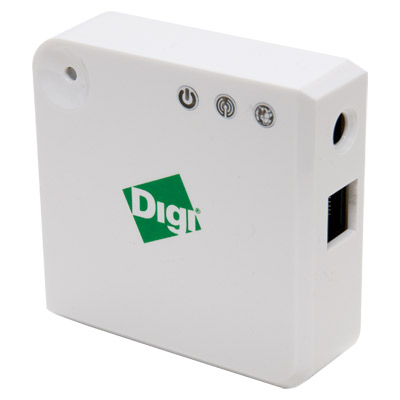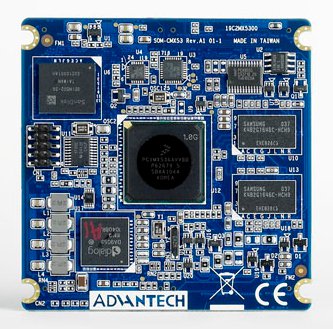Linaro has just released version 12.02 based on Linux Kernel 3.3-rc and Android 4.0.3. Among the key points, they have started to work on Freescale i.MX6 SabreLite board, included libav 0.8 to Ubuntu images which provides up to 160% performance improvement while playing real-media videos and XBMC is available via PPA. Here are the highlights of the release: Android Linaro Android can now be built with current GCC 4.7 snapshots. A 4.7 based toolchain build preview is also available. Linaro Android can boot on iMX6 Sabrelite boards. All test result spreadsheets have been streamlined and are now easier to use. Bluetooth enablement have been completed for the Origen board. A Prototype of using camera on Snowball was made. Presentations Given by Linaro Android Team this cycle “Binary Blobs Attack!!!” – Embedded Linux Conference. “What Android and Embedded Linux can learn from each other” – Embedded Linux Conference. “Integrating Projects Using […]
Seneca Uses GuruPlug Server Farm to Build Raspberry Pi Fedora Distribution
Prior to the Raspberry Pi Fedora 14 Remix launch party, Seneca has uploaded a video showing the work they have done to have Fedora 14 work on Raspberry Pi. Here are some interesting points ion this video: All basics application such as a web browser, office suite, the components you need to build a LAMP (Linux, Apache, MySQL, PHP) server… are already working. 2D graphics acceleration is not implemented yet, so the first release may feel a bit sluggish. But eventually, since the Raspberry Pi has a pretty good GPU, 2D support (OpenVG in Cairo library?) will be implemented at some points in time, either by Seneca or other people in the development community. Seneca uses around 60 ARM devices in their build farm that generates all the binaries for the Fedora ARM Remix release (e.g. the ones you can get with “yum install”) and among those device there are […]
ConnectPort X2e SEP 2.0 Compliant Home Energy Gateway with Zigbee Connectivity
Digi International announced the “ConnectPort X2e for Smart Energy”, a Linux-based Home Energy Gateway with Zigbee connectivity based on Freescale Home Energy Gateway Reference Platform powered by Freescale i.MX28 processor. The “ConnectPort X2e for Smart Energy” is upgradable to comply with the new Smart Energy 2.0 Profile (SEP 2.0) and enables ZigBee devices on a Home Area Network (HAN) to communicate with an energy service provider. The new gateway is a low-cost, enhanced version (hence the “e” in X2e) of Digi’s ZigBee Smart Energy Gateways. The device connects ZigBee Smart Energy devices from a Home Area Network (HAN) to an energy service provider via broadband. It supports over-the-air updates of connected Smart Energy devices, making it easier for utilities and application partners to establish and maintain large Smart Energy device deployments. The company offers two models namely: ConnectPort X2e, ZigBee SE Coordinator for stand-alone Smart Energy networks that do not […]
Linaro 12.01 Release with Kernel 3.2 – Android 4.0.3
Linaro has just released version 12.01 based on Linux Kernel 3.2 and Android ICS upgraded to 4.0.3. A lot of work has been done to have video hardware decoding on OMAP 4 (in GStreamer) enabling Pandaboard to run Ubuntu TV and XBMC with Video HW acceleration. Prebuilt binaries for Linaro GCC and Linaro GDBare now available which means you don’t need to use Ubuntu with Linaro Toolchain. It has been tested with Debian 6.0.2, Fedora 16, openSUSE 12.1 and Red Hat Enterprise Linux Workstation 5.7 and should run on any Linux Standard Base 3.0 compatible distribution. Windows binaries are also available and known to work on Windows XP Pro SP3, Windows Vista Business SP2 and Windows 7 Pro SP1. Here are the highlights of the release: Android Linaro’s ICS has been upgraded to 4.0.3. Linaro Android ICS builds are now optimized using -O3 with the Linaro Toolchain. Click through builds […]
The Past, Present and Future of Ubuntu for ARM
David Mandala of Canonical talked at Linux.Conf.Au on 18th of January 2012 about Ubuntu for ARM and the move from netbook to server support. You can read my notes below, or jump at the end of this post to watch the presentation. The Past 2008: Ubuntu decides to only support ARMv7 architecture vs. Debian that supports ARMv4 and above. 2009: Ubuntu release for Freescale i.MX51 (ARMv5 built), and then Marvell ARMAVA with ARMv6 and VFP (ARM floating point unit) support. 2010: April (10.04) The first ARMv7 release for OMAP3 (Beagleboard) with VFP, Thunb2, NEON and SMP for ARM and first netbook edition October (10.10) Pandabord (OMAP4) release with initial device tree support for ARM. Starts work with Linaro. 2011: 11.04 (5th release) – Supports OMAP3 and OMAP4 only. The netbook edition is using Qt, further improvement to device tree, further work with linaro and on the way to the Unified […]
Freescale i.MX6 Automotive & Aerospace Infotainment Applications
Freescale showcased i.MX6 Series (ARM Cortex-A9) based in-vehicle infotainment (IVI) systems at CES 2012. Charbax (armdevices.net) has an interesting interview, where they show IVI products based on Freescale i.MX6 series running QNX operating system with the dashboard, a control panel and a tablet for the back seats. There are also some impressive 3D demos as well as real-time 3D modelling of the car thanks to 360 cameras and OpenCL support in the iMX6 GPU. 3D modelling allows the driver to see a top view of the car while parking in narrow spaces. Freescale provides Long Term Support (LTS) for processors used in the automotive and aerospace industries and the company has committed to 15 years of support for the i.MX6 series. Jean-Luc Aufranc (CNXSoft)Jean-Luc started CNX Software in 2010 as a part-time endeavor, before quitting his job as a software engineering manager, and starting to write daily news, and reviews […]
Freescale Announces i.MX6 Lite Series
Last year, Freescale introduced i.MX6 series processors to the market in single, dual and quad core Cortex A9 configurations, today at CES 2012, they have announced i.MX6 Lite Series in single and dual core configuration respectively the i.MX6SoloLite and i.MX6 DualLite. Both processors incorporate ARM Cortex-A9 cores and E-Ink controllers and are especially suited to e-Readers, but Freescale expect the i.MX6 DualLite to also to be used in tablets, IPTVs, IP phones, medical patient monitoring systems and home energy management solutions. The new processors are software-compatible with other i.MX 6 series devices, so that developers can create end-product at different price points using a common platform. Freescale explains that “this scalability enables the rapid creation of complete end-product portfolios that can adjust and scale to meet evolving market demands and requirements”. The two new processors come to replace Freescale i.MX508 device, which is currently used in millions of eReaders. Here […]
Advantech ROM-1210 Computer on Module Powered by Freescale i.MX53
Advantech announced today a new Computer On Module (COM), the ROM-1210, powered by Freescale i.MX53 Cortex-A8 Processor clocked at 1 Ghz, with 256 to 512MB DDR3 onboard, 2GB Flash (upgradable to 64 GB) and supporting OpenGL ES 2.0, OpenVG 1.1 hardware 2D/3D accelerators. The module also supports full HD 1080p video decoding and HD 720p video encoding via its hardware engine. The company targets human machine interface (HMI), digital signage, industrial automation, cloud computing and portable applications with this platform that can run Android 2.3, embedded Linux 2.6 and Windows Embedded Compact 7. Here are ROM-1210 specifications: CPU – Freescale i.MX535 Cortex-A8 1GHz (i.MX536 Cortex-A8 800MHz for wide temp. only) System RAM – 512 MB DDR3 (256 MB as optional) Flash – 2 GB (up to 64 GB) Graphic Chip – 24-bit LCD controller by CPU. Resolution Default 800×480 WVGA (320X 240 ~ 1920X1080 as optional) LCD Interface – 2x […]







